Franz Dreise Needle Revolver
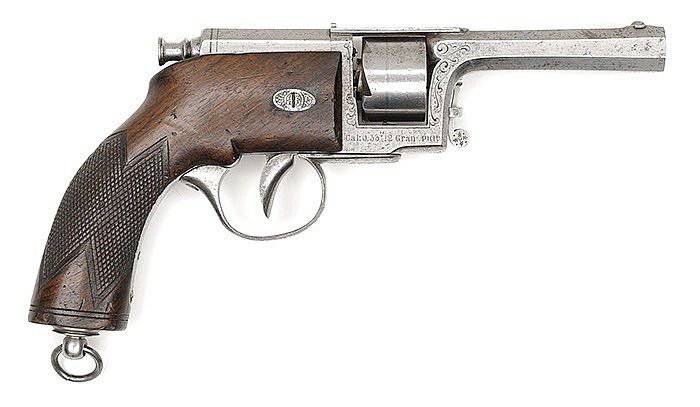
The appearance in the first half of the 19 century rifle weapons With the needle ignition system was one of the stages of creating unitary cartridges. The founder of the needle weapon and the creator of the prototype of the unitary patron was the outstanding German designer Johann Nicolaus Dreyse.
Dreyse needle rifles were successfully used in the Prussia army. For his design achievements, Nikolaus Dreyze received a nobility and was named Johann Nikolaus von Dreyze. After the death of his business continued the son of Franz von Dreyse, who was also an outstanding inventor.
Franz Dreyse (Franz von Dreyse) was engaged in further improvement of needle rifles, as well as developing the design of short-barreled weapons: needle pistols and revolvers. The basis for such a weapon was a paper cartridge with a cap and a bolt with a striker in the form of a needle.
Dreyze's paper cartridge was a capsule twisted from thick paper. A bullet was placed at the head of the cartridge. Gunpowder fell asleep at the bottom. Between the bullet and the powder charge was installed primer. The needle of the firing mechanism was supposed to pierce the thin paper bottom of the cartridge and, after passing through the powder, prick a cap (the photo shows the linear dimensions of the cartridge to the Dreize rifle)
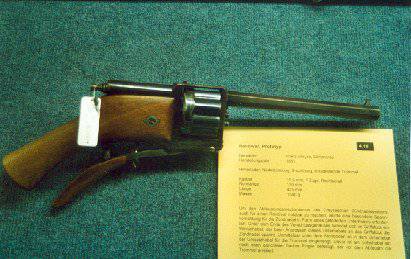
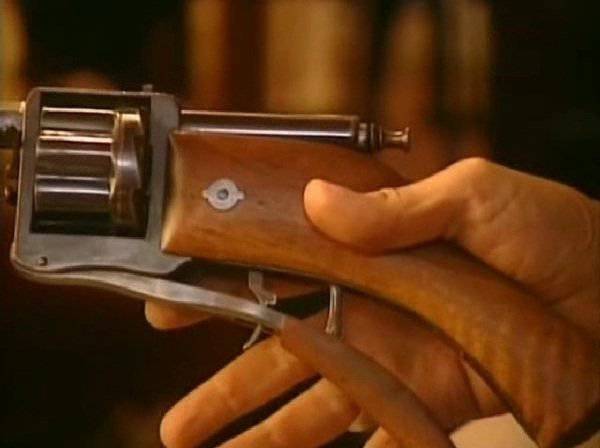
One of the first needle revolvers Dreyze was quite primitive. A separate lever installed in the lower part of the handle turned the drum and cocked the trigger mechanism. Only after that you could pull the trigger and make a shot.
In addition to Draize, other gunsmiths also developed needle weapons. In the UK, George Kafal (G. Kufahl) patented the design of a needle-shaped revolver, but not finding any interest in the arms manufacturers, sold his patent to Franz Dreyse. For this reason, some authors call the needle revolver of the 1860 model of the year a double name - Dreyse-Kufahl Revolver.
Around the beginning of the 60 of the 19 of the century, the Franz Dreise needle revolver was created and its mass production began in the German city of Sömmerda (Thuringia). Different sources indicate different release dates. Some people call 1850 a year, others 1855 a year, some have 1860 a year. The author of the article “Novodel” of the Dreyze system, Aleksey Dashkevich, in the magazine Master of the Rogue for January 2003 of the year indicates that the revolver began to be mass-produced in the 1860 year and describes the replica of the revolver in the article "... Different dates probably characterize the appearance of various modifications of the Dreyse needle revolver, which has been constantly modernized.
The Franz Dreise needle revolver consists of a frame with a barrel, a drum, a firing mechanism and a handle. The total length of the weapon 273 mm, weight about 500 gr. The characteristic somewhat elongated appearance of the breech of the revolver is explained by the need to place the needle, which serves as a drummer.
On the left side, at the bottom of the needle revolver frame, Dreyze has a pin on which a lever is put on to equip the drum with cartridges. In the front frame of the frame on the left there is a recess for the possibility of installing the cartridges in the drum.
The barrel of the revolver is octagonal, made integral with the frame. The bore has four grooves. The length of the barrel 102 mm. At the top of the barrel is a front sight, the position of which can be adjusted horizontally.
The rear-notch target, fixed, is installed at the top of the breech frame of the revolver.
The drum of the needle revolver is fixed on the axis. The axis of the drum has a "G" -shaped lever, which, when rotated, is fixed in a special protrusion of the frame, which prevents spontaneous falling out of the axis of the drum.
After turning the lever of the axis and removing the axis from the hole of the frame of the revolver, the drum is easily separated from the weapon. After removing the drum in the breech frame, the levers of the turning mechanism and the protruding needle become visible.
The drum of the revolver is cylindrical, has six chambers. The back of the drum chamber has only small holes for the passage of the needle. Ratchet is made on the back of the drum on its outer surface. For incomplete disassembly of the Franz Dreize needle revolver, it is enough to remove the drum, detach the handle, having previously unscrewed the fastening screws, and also unscrew the needle from the guide part of the frame with a spring.
The Franz Dreise needle revolver has a double action trigger mechanism. When the trigger is pressed, the drum is rotated, the needle spring is cocked and the needle is on the combat platoon. Upon further movement of the trigger back, the needle breaks off the platoon, pierces the bottom of the paper cartridge and after passing through the powder charge pushes the capsule - a shot occurs.
The handle of the needle revolver is made of walnut. On the side surfaces of the handle is applied a small diamond-shaped notch. In the shank of the handle set the ring for fastening the turret belt. The handle is fixed to the frame using two transverse screws in the upper part of the handle and one longitudinal screw in the lower part in front.
In the upper part of the frame above the drum, there is a marking text with the name of Franz Dreyse and the name of the city in which the weapon was produced: “F. DREYSE SÖMMERDA »
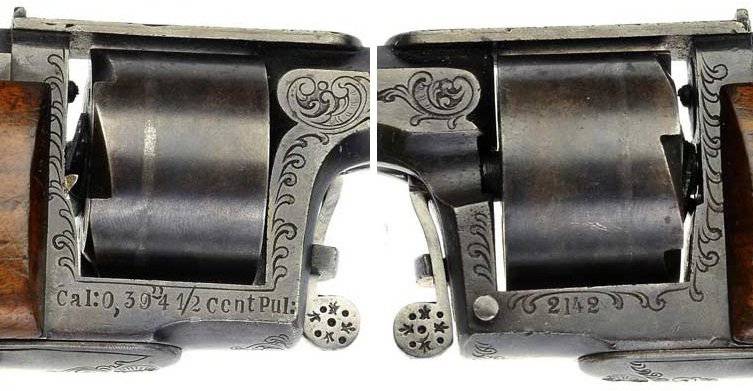
The marking on the right side of the frame is an alphanumeric text denoting a caliber in fractions of German inches, corresponding to 10,2 mm, as well as the weight of the powder weight “Cal: 0,39 4 ½ Cent Pul”. On the left side of the frame is the serial number "2142".
The metal parts of the frame and the trigger guard are blued, they are often decorated with an engraving depicting floral ornament.
Varieties of needle revolvers Franz Dreyse
Franz Dreise needle revolvers are found in several modifications. Differences probably associated with different years of release. Revolvers were made in three main calibers 0.30, 0.35 and Prussian 0.39 inches, which correspond to mm 7,85, mm 9,16 and 10,2 mm. Let's consider other visual differences of needle revolvers.
On some revolvers, including this one, with the serial number "11041" on the left side of the frame, a metal rod appeared behind the drum, fastened with a screw to the frame, resembling a flat spring in appearance. The contour of the relief notch on the handle is deep, zigzag-shaped.
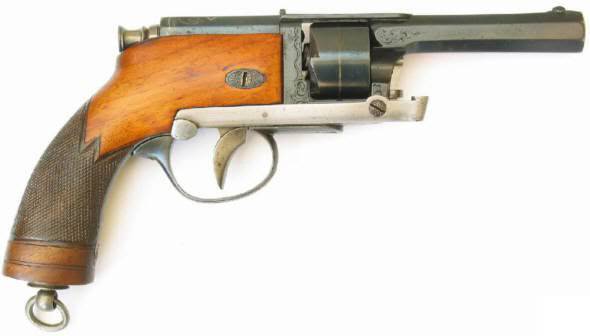
In the needle revolver shown in this photo, the charging lever is fastened with a screw on the right side of the frame.
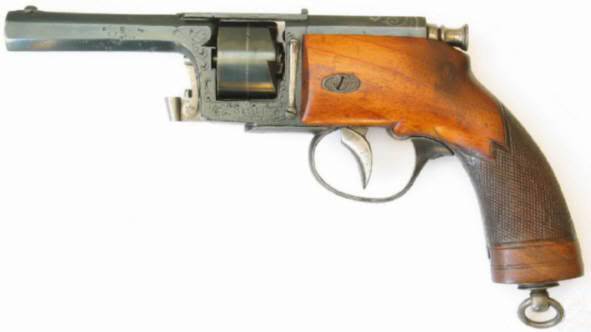
For this reason, the notch in the front frame rack, designed for easy drum loading, was not made from the left side of the frame, but from the right.
Franz Dreise needle revolvers are sometimes encountered with complex-shaped handles. The tips of such handles follow the contour of the handle itself. Perhaps these handles were custom-made, it is possible that this is just the work of restorers.
In addition to walnut handles are sometimes made of dark ebony.
The Franz Dreize needle revolver was mainly sold as a self-defense weapon, but in the 0,39 caliber (10,2 mm) it was used by the police and border units. The marking of the revolver with the serial number "6967" on the left side: "GLG4." Means that the weapon under the number 4 was in service with the land. gendarmerie (Groherzogliche Land-Gendarmerie Revolver 4)
On parts of some needle revolvers there is a marking indicating their acceptance for service in Prussia. Marking is an image of the Prussian eagle, the crown above the letter "M" and the crown above the letters "RC".
Franz Dreise needle revolvers had the same drawbacks as any needle weapon. The paper cartridge did not protect the powder from moisture. A thin needle at the time of the shot was inside the cartridge and was exposed to temperature and chemical effects. The needle was thin and fragile. Scraps of paper cartridge gradually littered the trunk. Spike revolvers could not stand the fierce competition in the market of firearms. Colt's cap revolvers were more compact and reliable and have long gained popularity not only in the US, but also in Europe. The appearance of hairpin cartridges with a metal sleeve, as well as cheap revolvers Lefoshe permanently ousted hairpins from the market.
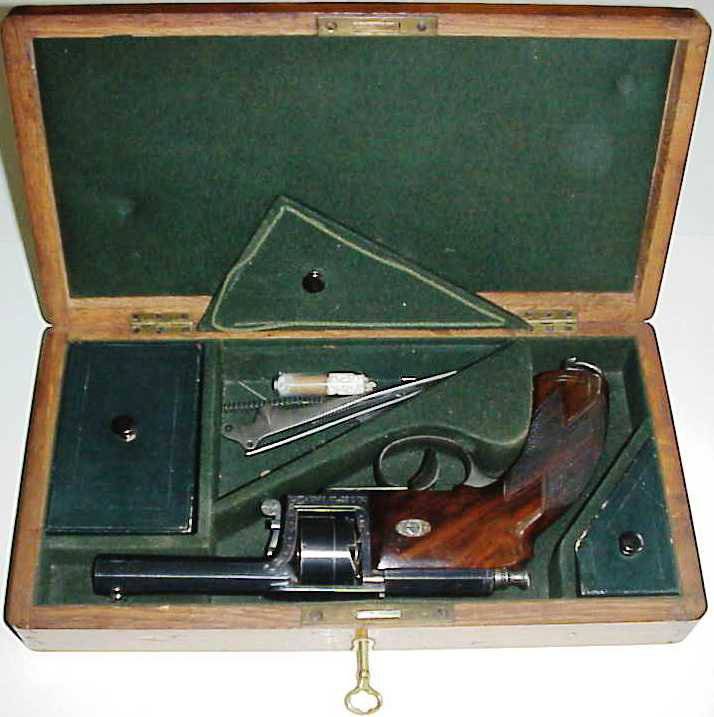
At the same time, Franz Dreyse needle revolvers are not only the dead end of the evolution of revolvers, but also one of the interesting pages. stories weapons. Needle revolvers are in great demand in the market for antique weapons. According to preliminary estimates, no more than Dreyse's 1000 needle revolvers were released. Price for some specimens in good condition and decorated with engraving exceed 4 - 5 thousand dollars.
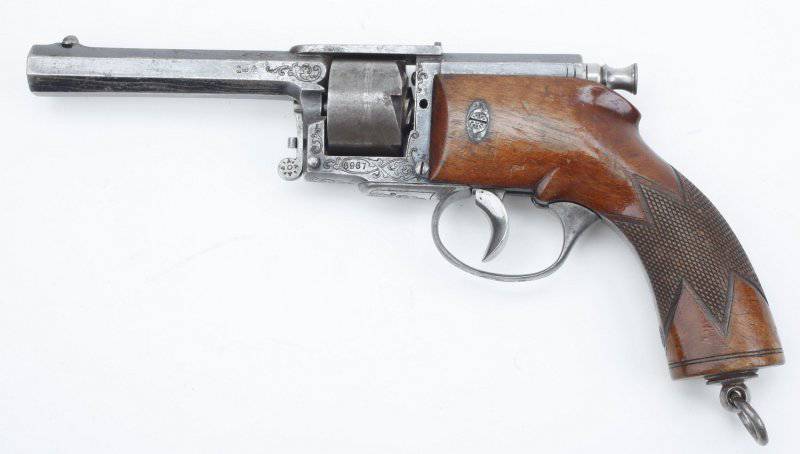
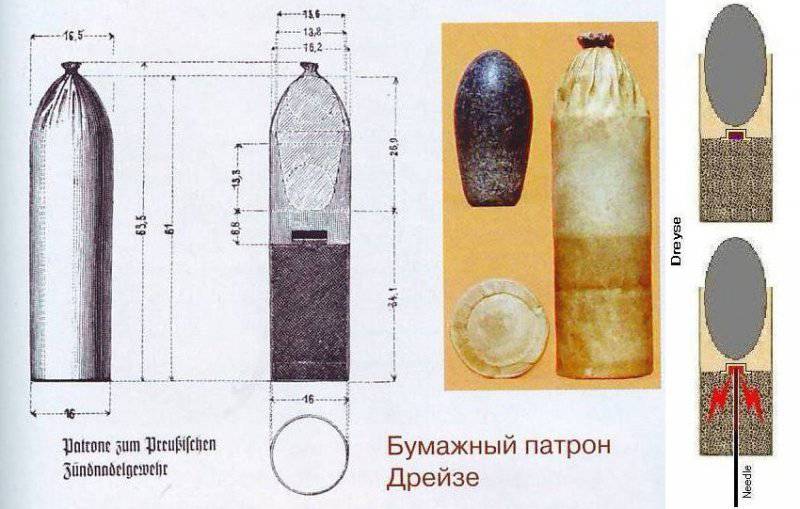
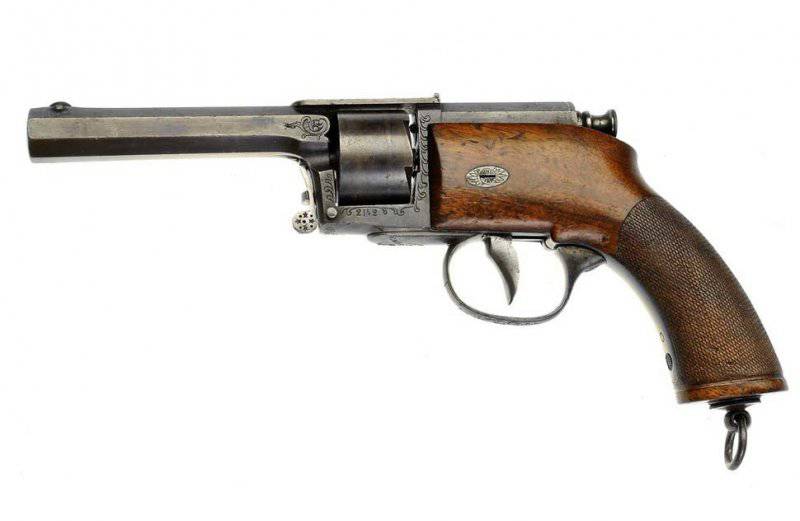
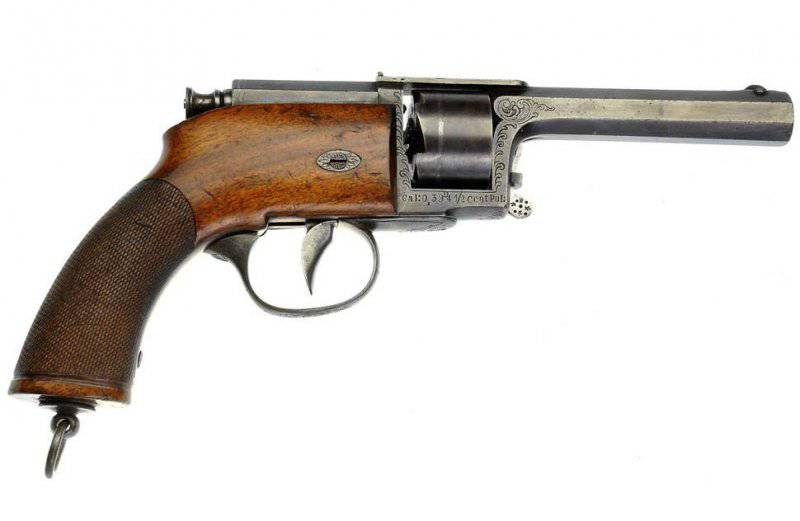
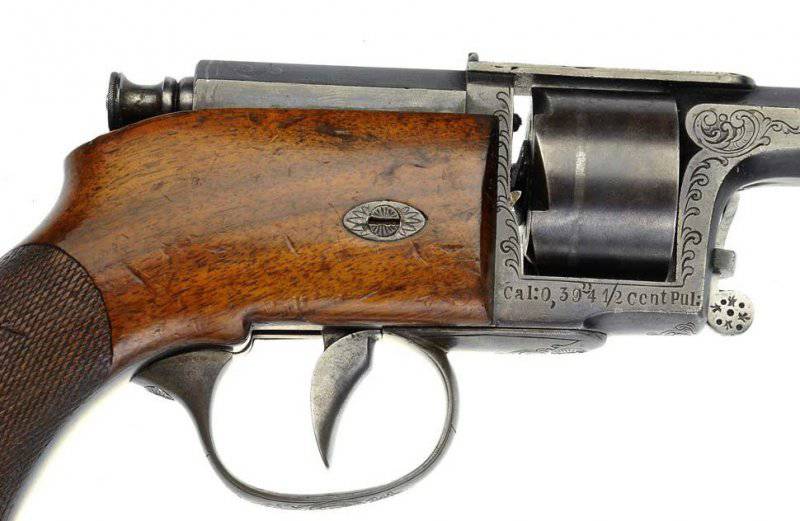
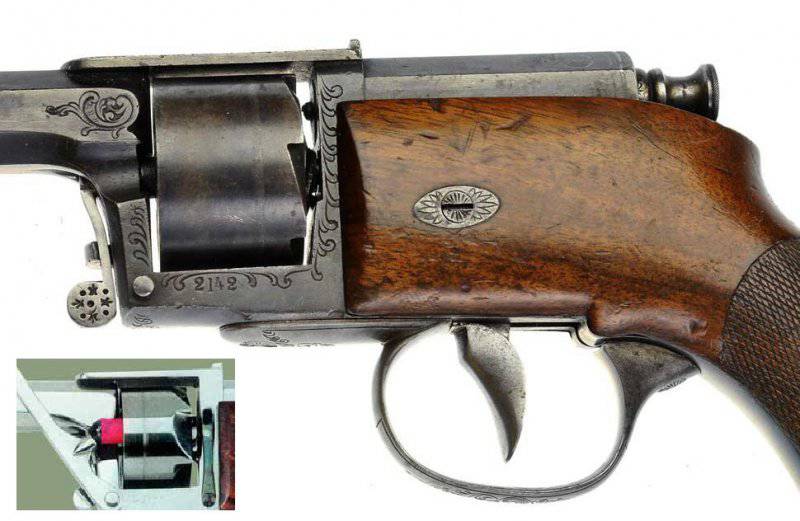
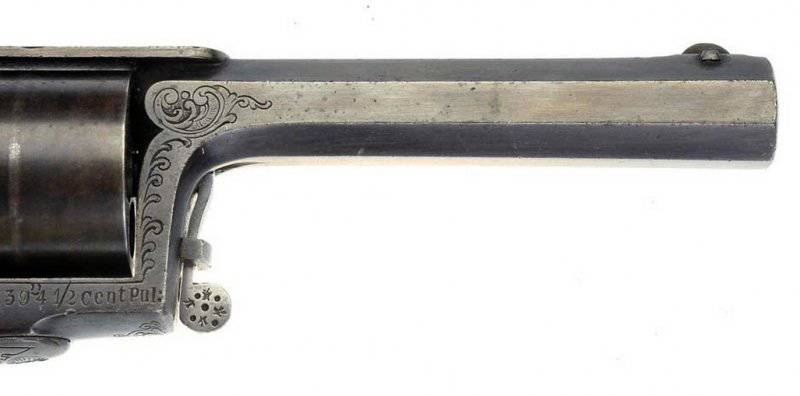
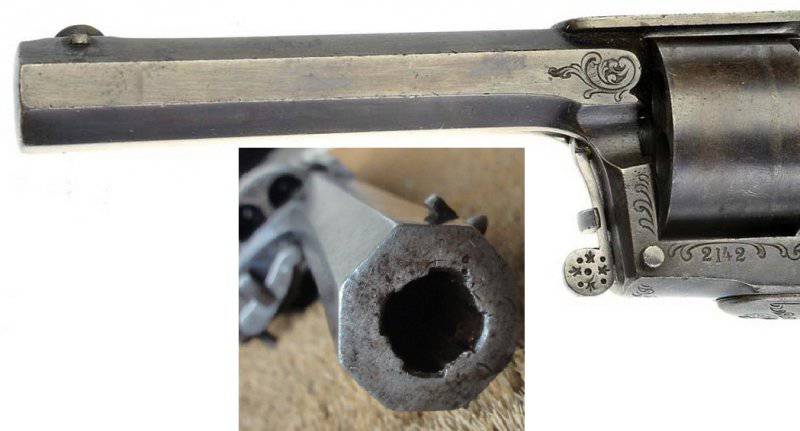
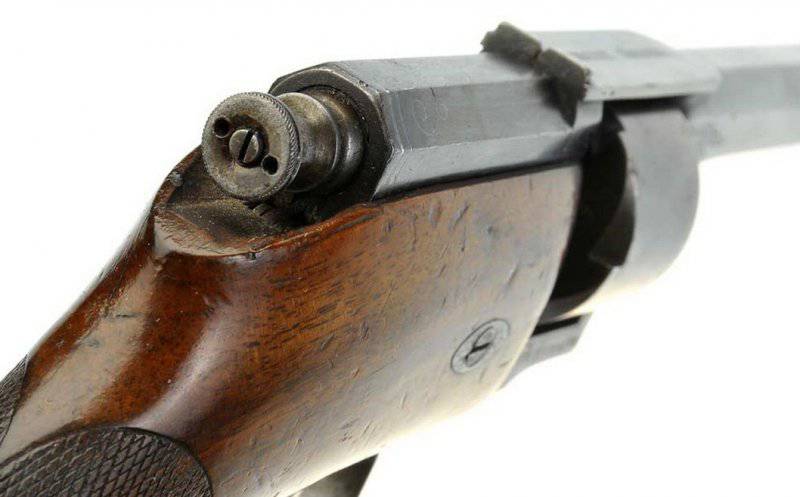
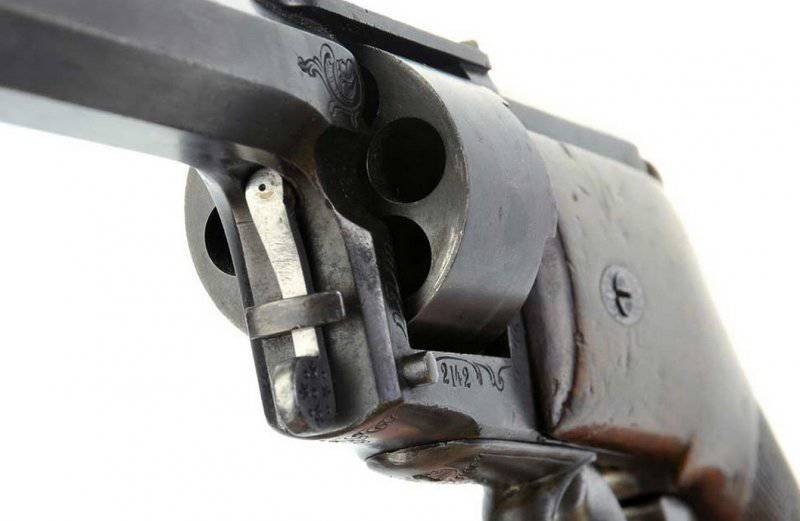
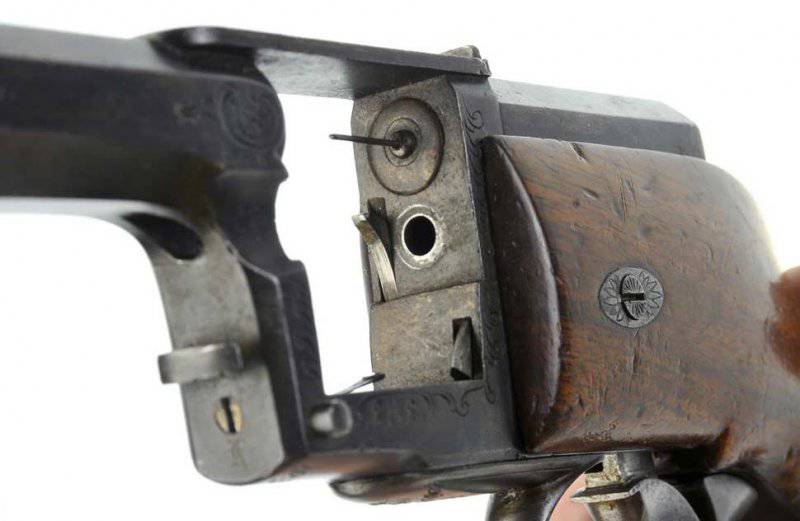
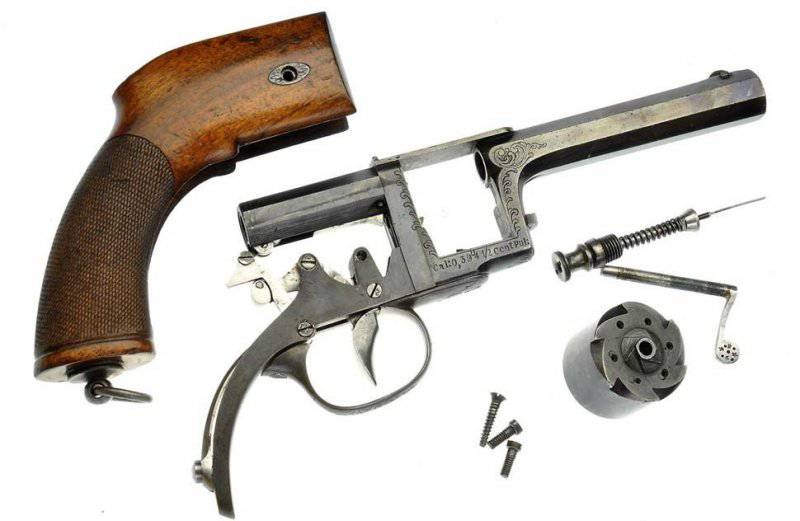
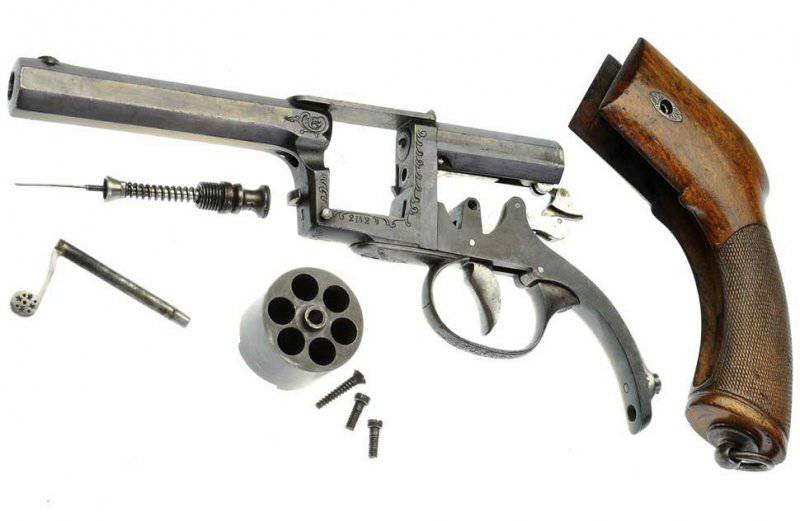

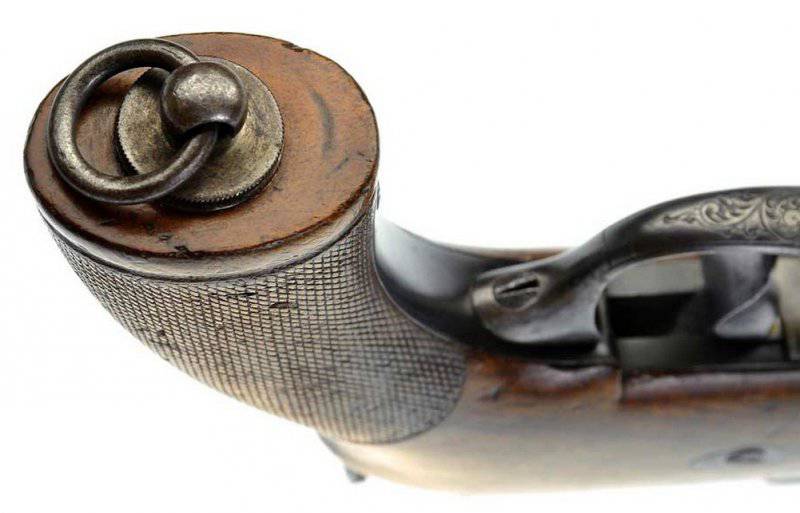
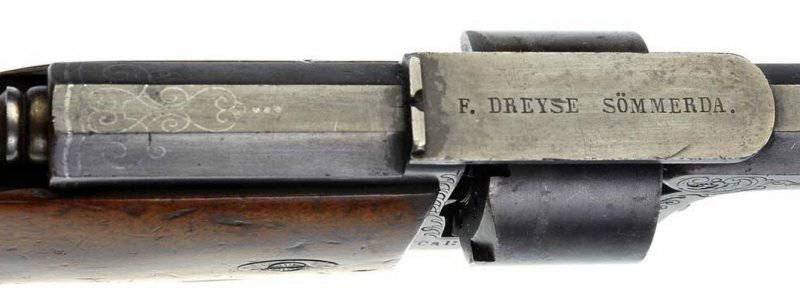
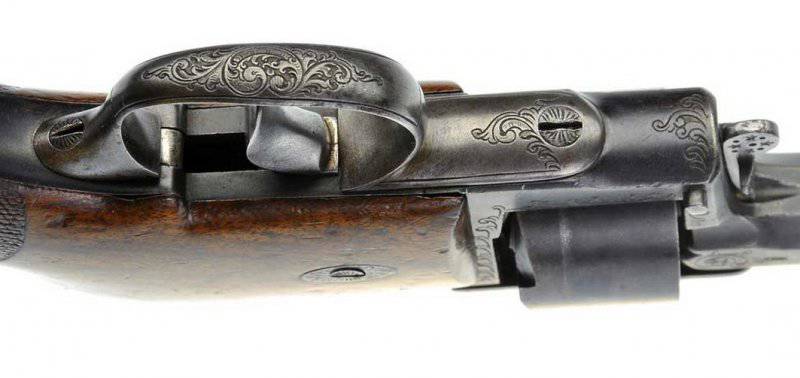
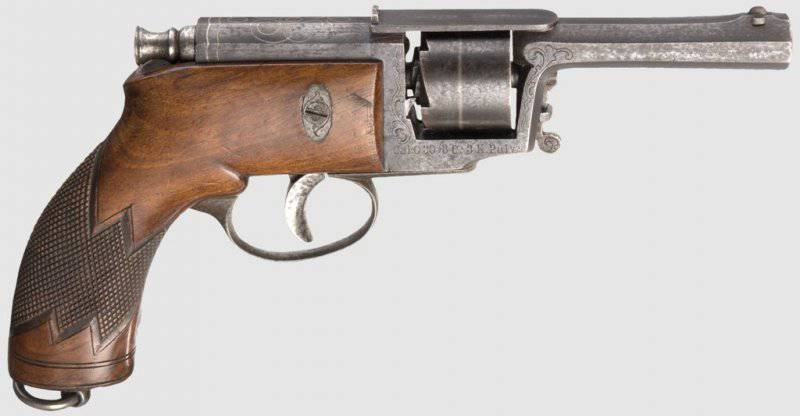
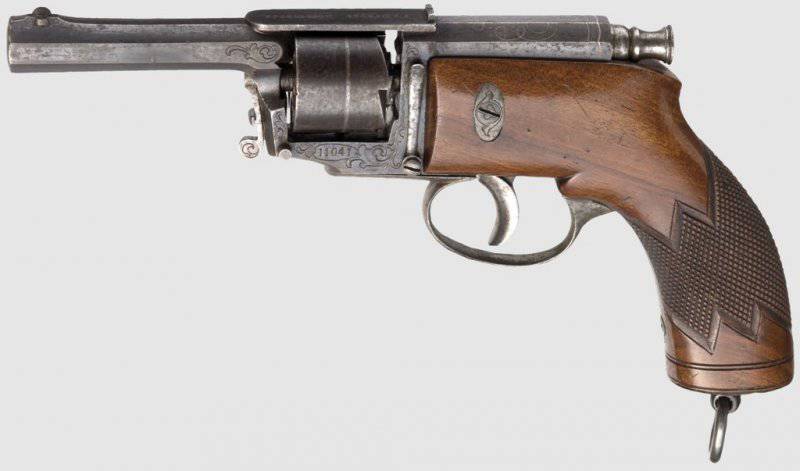
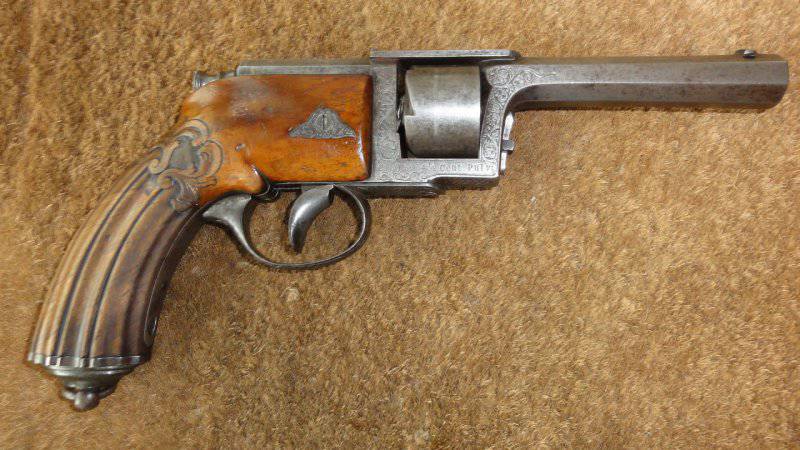
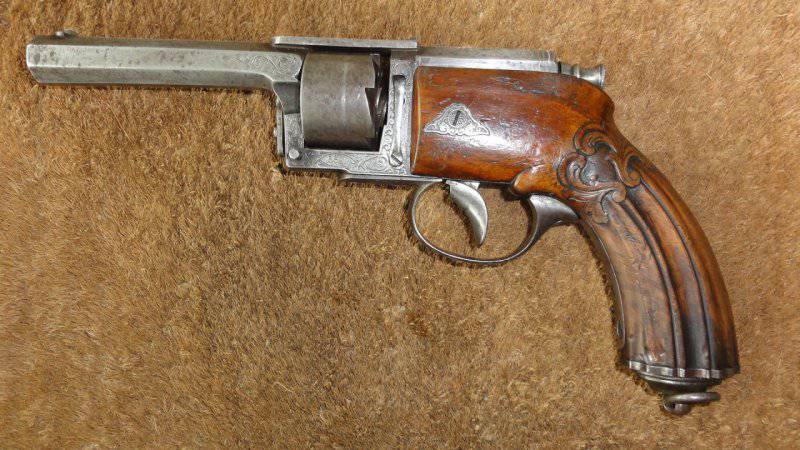
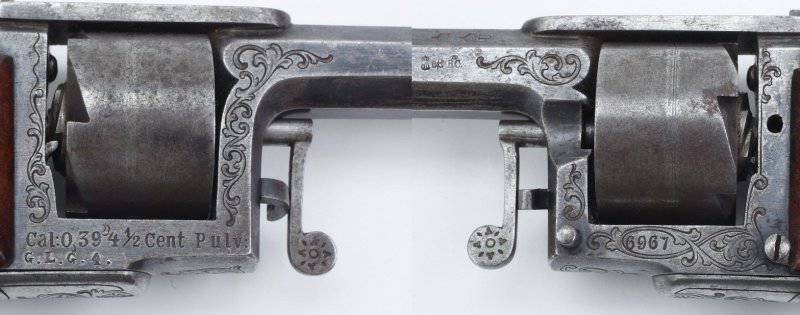

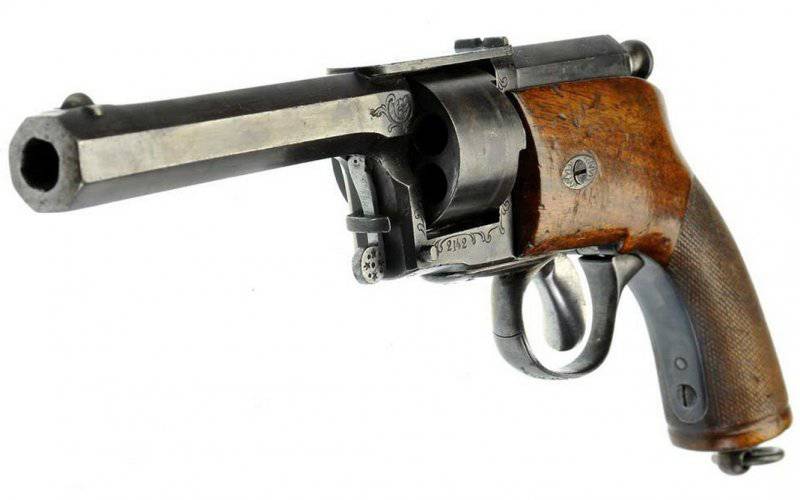
Information